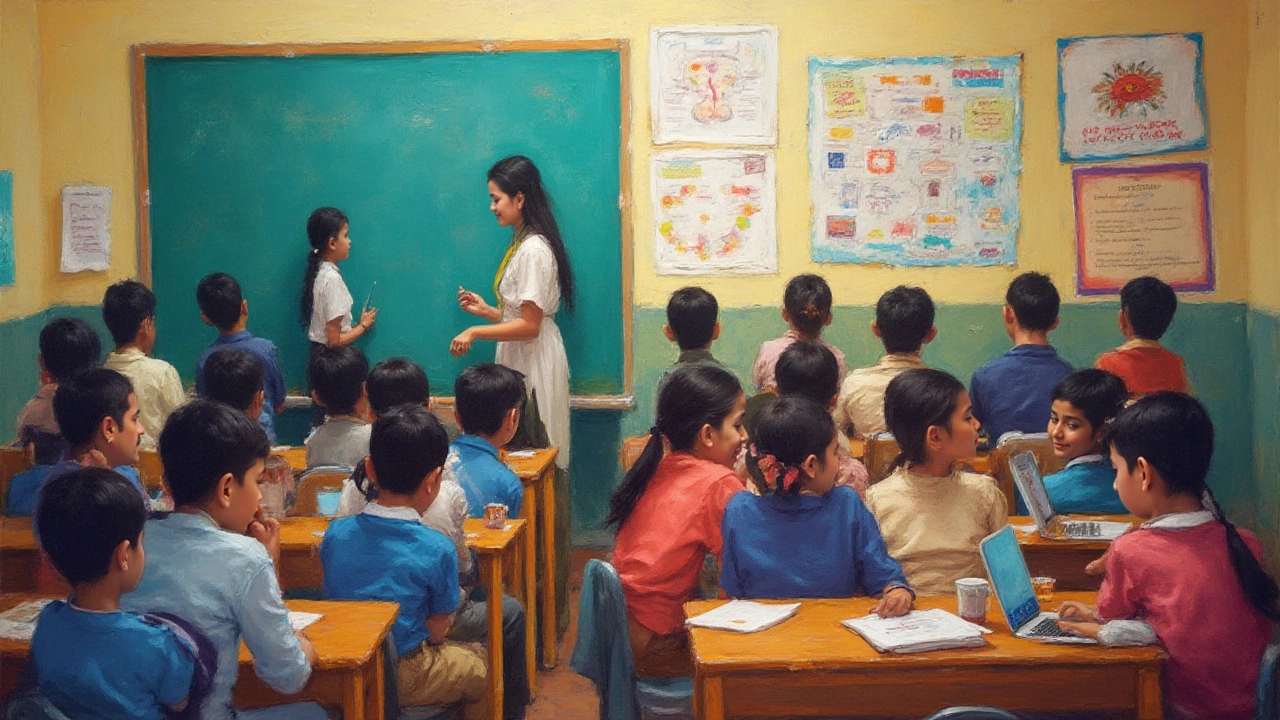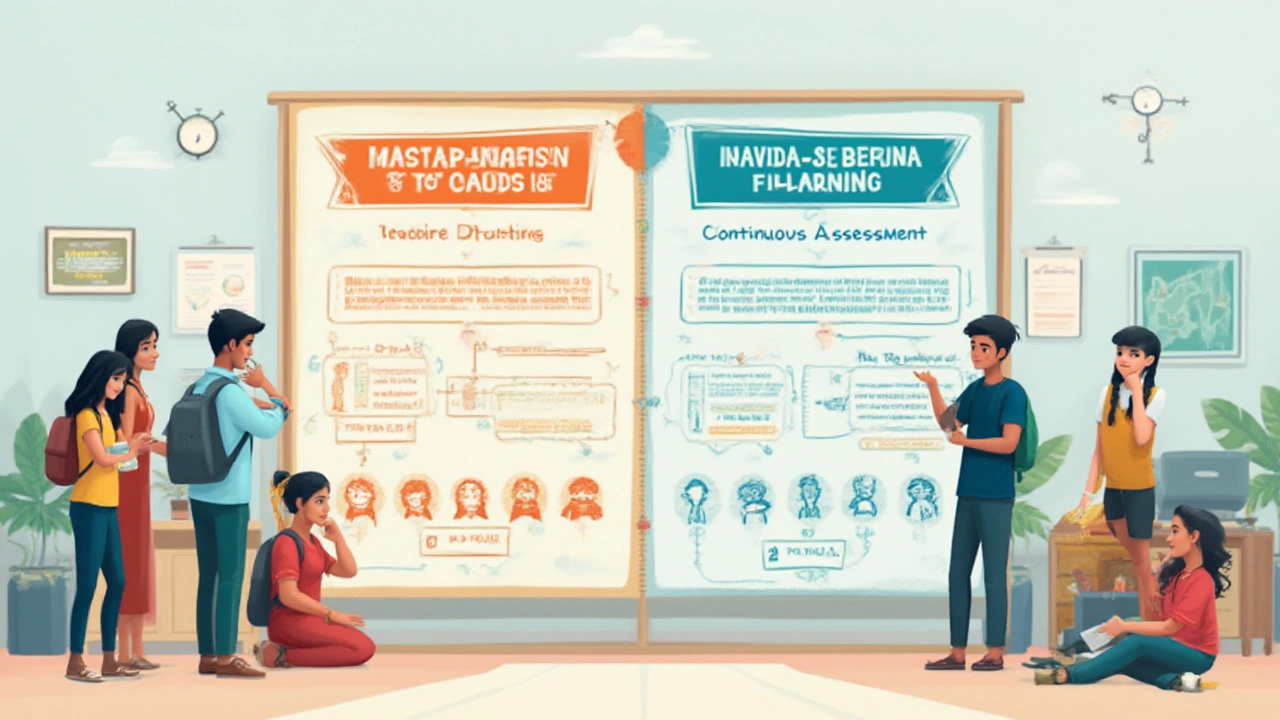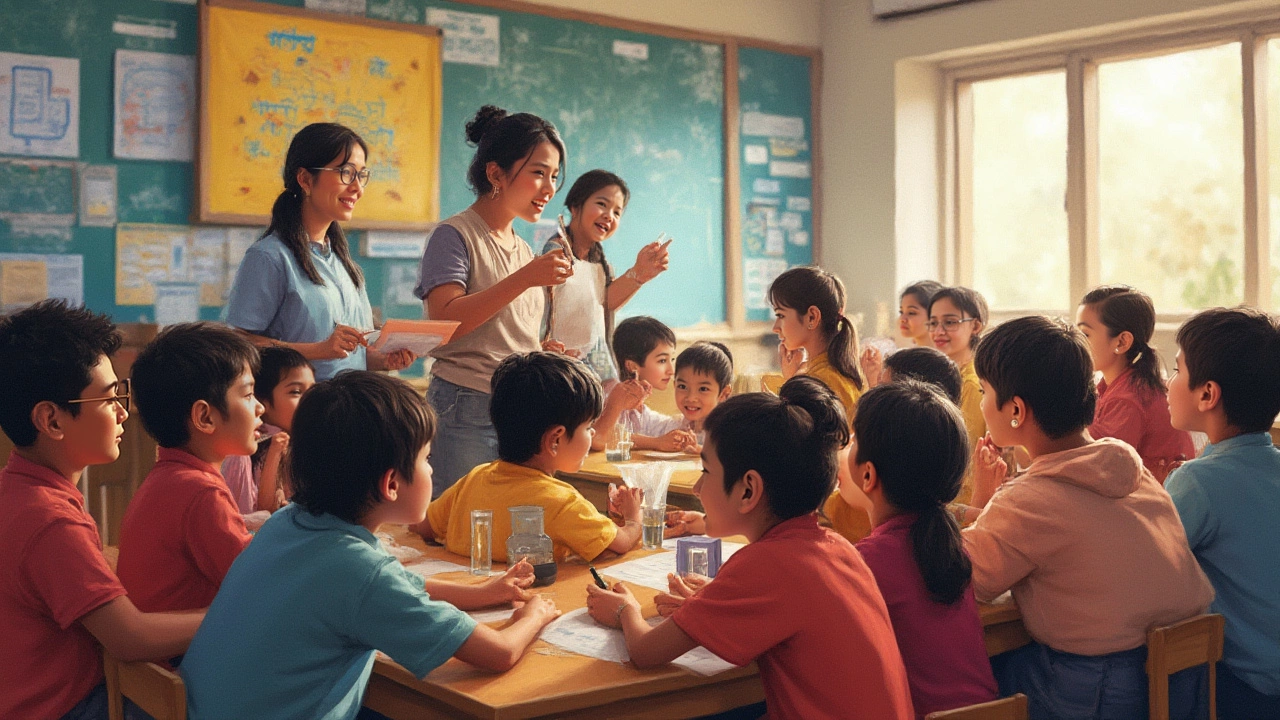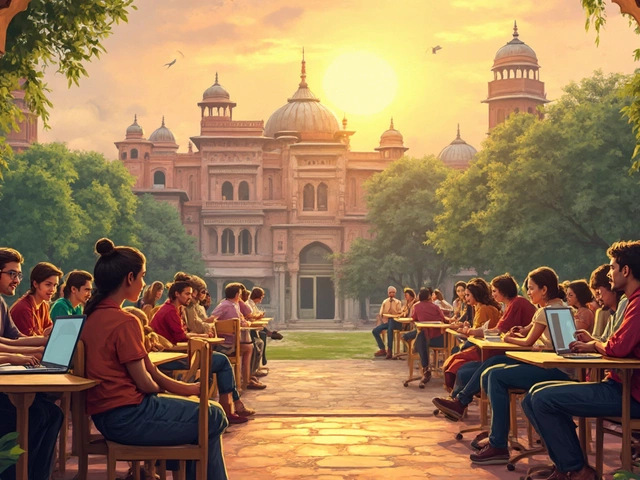Every year, hundreds of thousands of families face a tricky question: is the Central Board of Secondary Education, better known as CBSE, actually tougher than the typical American school curriculum? The debate never really fades away. Students caught in the middle swap horror stories online—CBSE’s marathon math exams, endless fact-memorizing, and hours spent with physics formulas, versus the American system’s focus on projects and critical thinking, or as some would argue, ‘easy A’s.’ Who’s got it harder?
What Makes CBSE and American Schools So Different?
Let’s break it down, because these two systems are built with completely different blueprints. The CBSE curriculum is used by over 27,000 schools across India and hundreds more all over the globe. Rigorous, it’s rooted in textbooks, standardized exams, and a heavy focus on core subjects like math, science, and social studies. There’s a central board setting the rules for everyone, so whether you’re in New Delhi or Dubai, it’s the same playbook.
Now, American schools are a bit like jazz—improvised, varied, and sometimes strikingly individual. There’s no single set of textbooks. States and school districts call their own shots, so what’s tough in Texas might not ruffle anyone in New York. You’ve got public, private, and charter schools, Advanced Placement (AP) and Honors options, and tons of extracurricular flavor. The structure is flexible: critical thinking, class participation, projects, and research get a spotlight, while standardized exams are spaced out, not stacked at the end.
Kids in CBSE schools start feeling the crunch early. Board exams loom at Grade 10 and 12. Fail them, and your college dreams hit a wall. In American schools, not so much. Assessments are spread out, retakes are sometimes possible, and while the SAT or ACT still matter for college, you’re judged across four years, not just one nail-biting week.
Course Content: Rote Learning vs. Critical Thinking
The fight often boils down to how you’re supposed to learn. In CBSE, it’s all about the syllabus. Memorization is king. You’re swallowing formulas, definitions, and facts, then spitting them out with surgical precision in board exams. The textbooks keep changing (thanks, NCERT), but that rigid structure holds strong. A teacher in Mumbai once joked that CBSE asks for “full-sentence answers—the exact words,” or kids lose marks. It’s not uncommon for students to study 6-7 hours a day outside school as exams approach, battling coaching center assignments, tuition, and old question papers.
Meanwhile, the American system leans hard into analysis, application, and creativity. It asks, “What do you think?” rather than “What did the book say?” Projects, in-class discussions, and research papers matter. Yes, there are quizzes and finals, but ‘show your reasoning’ is the gold standard. For example, an AP World History student might write an essay comparing revolutions, using their own arguments and evidence—not just filling in blanks. Science classes spend more time on lab work. There’s more group work and fewer ‘sit and scribble everything you remember’ moments.
The flipside? Some students (and parents) argue the American school system can be too forgiving. If you fall behind once, you might catch up later. CBSE’s rigid calendar and syllabus mean that a bad month can sting for years.

How Do Assessments Compare?
Assessment styles are probably the biggest difference. CBSE exams are infamous: long, detailed, and packed with both straight questions and tricky applications. A CBSE math board exam, for instance, has 3-hour papers filled with multi-step questions. Everybody in India takes the same test on the same day, so there’s major stress to outperform the crowd. According to data from 2024, about 87% of CBSE students pass their board exams, but only a small slice score “distinction.”
In contrast, American schools use continuous assessment—think homework, quizzes, presentations, essays, group projects, and class participation. AP and Honors courses do ramp up the challenge, often to or even above CBSE standards, but students have multiple chances to show what they can do. Teachers control grading. Parent-teacher meetings are direct, and support is more baked in. Colleges look at your whole high school journey—grades from Grade 9 through Grade 12—rather than just how you did one March morning.
Exam pressure is a culture in itself in India. It’s not rare for CBSE students to drop other interests before boards. In American schools, the culture often values balance. Sports, arts, volunteering, all count towards your college profile. That can take the edge off exam pressure, but it also means fewer “do or die” moments.
| Feature | CBSE | American School |
|---|---|---|
| Assessment | Board exams, high-stakes, right/wrong answers | Continuous, projects, essays, creative answers |
| Grading | Centralized, numbers and grades | Teacher discretion, letter grades |
| Focus | Facts, formulas, accuracy | Application, analysis, participation |
| Curriculum Control | Central (CBSE Board) | Local (State/District) |
| Flexibility | Low—fixed schedule, tough deadlines | High—some “late work” allowed |
Student Experience: Stress, Pressure, and Preparation
Talk to anyone who’s lived through both systems and you hear some wild stories. Ananya, who moved from Chennai to California for her senior year, shared that CBSE “felt like a treadmill you couldn’t step off.” Study schedules, private tutors, family expectations—everything orbits around those board exams. She found American classrooms more relaxed, but sometimes was frustrated by open-ended assignments that felt ‘too light’ compared to her old workload.
There’s real data backing up that stress. In a nationwide survey by the Indian Ministry of Education in 2023, over 75% of CBSE secondary students reported feeling “very stressed” about exams, compared to around 40% of their American counterparts, according to the National Center for Education Statistics. Test prep businesses in India are a billion-dollar industry. ‘Board fever’ peaks each February and March, with revision marathons that sometimes run 10 hours a day.
But American students have their own grind—especially if they take multiple APs or aim for Ivy League colleges. The competitive instinct just looks different. SAT, ACT, extracurriculars, internships—it all piles up. Burnout is common, especially in the final years. Yet missing one exam rarely spells disaster. College applications allow for explaining circumstances, and many schools accept ‘test-optional’ admissions now.
One major difference: CBSE students tend to master the art of exam technique—reading questions with an eagle eye, timing their answers, and reviewing past papers for common patterns. In American schools, the skills focus more on research, presentations, group work, and communicating verbally, which can feel unfamiliar to CBSE students at first.

Which System Prepares You Better for the Real World?
The million-dollar question: does surviving one system over the other set you up better for life after graduation? Here’s the thing—universities and employers look for a mix. A CBSE grad is likely to have unstoppable grit, a deep comfort with intense workload, and time-management down to a science. But they may need time to adjust to open-ended college tasks or project-based work, especially abroad. If you’re coming from an American school, creative thinking, debating, teamwork, and independent research come naturally, but advanced math or memorization-heavy courses might take a little getting used to.
Here’s a tip for students bouncing between systems: blend the best from both. If you’re in a CBSE program, try taking on some creative side-projects or debate clubs. It’ll help you later, especially if you study abroad. American school students should push for harder courses—like AP Calculus or Honors Chemistry—to really stretch cognitive muscles if they enjoy a challenge. Don’t shy away from traditional skills like summarizing chapters or solving problem sets the old-school way—it’s a muscle you’ll need at the next level.
CBSE toppers who go on to college in the US sometimes crush their first-year STEM courses, but stumble when group presentations or “discuss your thought process” essays appear. American students in Indian colleges do the opposite—they write good project reports, but the shock of dense, content-loaded exams can take a year to shake off.
The world’s education map isn’t flat. Add in social differences—family pressure, resources, peer culture—and it’s not really apples-to-apples. But here’s something clear: both systems are changing. CBSE is adding more open-book and application-focused elements. Some American schools now use Cambridge IGCSE or IB—both more content-heavy—to toughen their profiles for international college admissions.
If you’re a student—or a parent—stuck in this comparison, don’t get trapped in the “who suffers more” game. Ask what you want out of school: shoulder-to-shoulder competition, or flexible exploration? Sharpen your weaknesses by reaching outside your comfort zone. Yeah, CBSE is harder if we count rigid exams and loaded syllabi. But American schools will stretch your creativity and confidence in ways textbooks never can. Real toughness? That’s adapting across both worlds.






Write a comment: